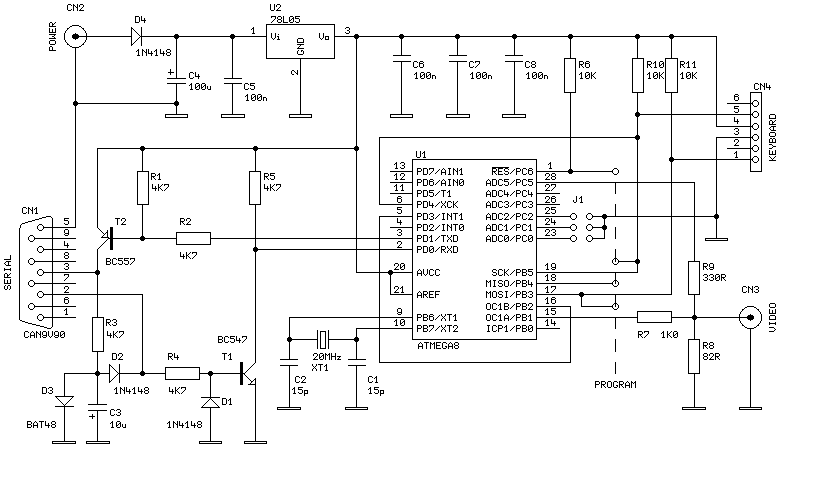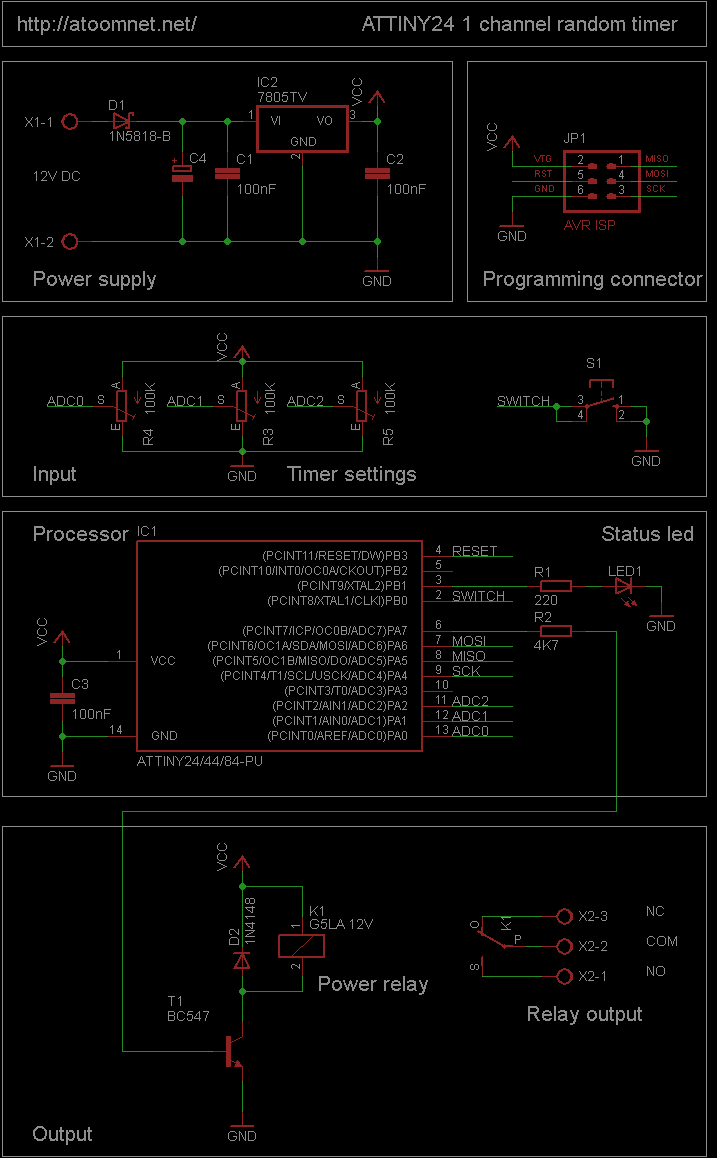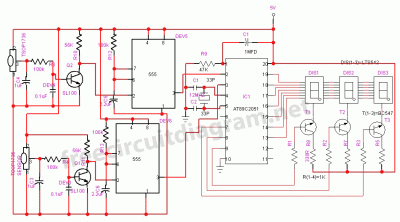
alarm using PIC16F628-04

This article describes a 2-Input alarm developed on the PIC LICK-1 Module using a Microchip PIC16F628-04. The program uses the internal 4MHz oscillator and if any other frequency is used, the timer values will need to be changed. A two zone alarm means the system has two separate detection circuits and can identify which circuit was triggered. The circuit uses lines RA1 and RA2 as zone 1 and zone 2. The operator can only enable or disable Zone 2. More: This allows situations such as disabling a large zone such as the garage, while an ultrasonic detector covering a smaller zone, such as toolboxes or equipment, remains enabled. A more practical application would be in a small store with a workroom at the back.
The described 2-Input alarm system employs a Microchip PIC16F628-04 microcontroller, which operates efficiently with its internal 4MHz oscillator. The microcontroller is programmed to manage two detection zones, allowing for a versatile security solution that can be tailored to specific needs. The two zones are connected to the microcontroller via the I/O pins RA1 and RA2, which serve as inputs for the respective detection circuits.
Zone 1, connected to RA1, can be configured to monitor a smaller area, such as a tool storage space, while Zone 2, connected to RA2, can cover a larger area, such as a garage. The design allows the operator to selectively enable or disable Zone 2, providing flexibility in security management. This feature is particularly useful in environments where certain areas may not require constant monitoring, thus conserving resources and reducing false alarms.
The alarm system is designed to trigger an alert when a detection circuit is activated, which can be achieved through various types of sensors, such as motion detectors or door/window sensors. When a sensor within a zone is triggered, the corresponding input pin (RA1 or RA2) sends a signal to the microcontroller, which processes the input and executes the programmed response, such as sounding an alarm or sending a notification.
The design considerations include ensuring that the timer values are appropriately set based on the operating frequency of the microcontroller. If the internal oscillator frequency is altered, the timer settings must be recalibrated to maintain the correct timing for the alarm system's response. This aspect is crucial for the reliability of the system, as precise timing can directly affect the performance of the alarm.
In summary, the 2-Input alarm system developed on the PIC LICK-1 Module is a practical and flexible solution for security applications, allowing for tailored monitoring of different zones while providing the operator with control over the system's functionality. The use of the PIC16F628-04 microcontroller ensures efficient processing and responsiveness to security events.This article describes a 2-Input alarm developed on the PIC LICK-1 Module using a Microchip PIC16F628-04. The program uses the internal 4MHz oscillator and if any other frequency is used, the timer values will need to be changed.
A two zone alarm means the system has two separate detection circuits and can identify which circuit was triggered. The circuit uses lines RA1 and RA2 as zone 1 and zone 2. The operator can only enable or disable Zone 2. This allows situations such as disabling a large zone such as the garage, while an ultrasonic detector covering a smaller zone, such as toolboxes or equipment, remains enabled. A more practical application would be in a small store with a workroom at th 🔗 External reference
The described 2-Input alarm system employs a Microchip PIC16F628-04 microcontroller, which operates efficiently with its internal 4MHz oscillator. The microcontroller is programmed to manage two detection zones, allowing for a versatile security solution that can be tailored to specific needs. The two zones are connected to the microcontroller via the I/O pins RA1 and RA2, which serve as inputs for the respective detection circuits.
Zone 1, connected to RA1, can be configured to monitor a smaller area, such as a tool storage space, while Zone 2, connected to RA2, can cover a larger area, such as a garage. The design allows the operator to selectively enable or disable Zone 2, providing flexibility in security management. This feature is particularly useful in environments where certain areas may not require constant monitoring, thus conserving resources and reducing false alarms.
The alarm system is designed to trigger an alert when a detection circuit is activated, which can be achieved through various types of sensors, such as motion detectors or door/window sensors. When a sensor within a zone is triggered, the corresponding input pin (RA1 or RA2) sends a signal to the microcontroller, which processes the input and executes the programmed response, such as sounding an alarm or sending a notification.
The design considerations include ensuring that the timer values are appropriately set based on the operating frequency of the microcontroller. If the internal oscillator frequency is altered, the timer settings must be recalibrated to maintain the correct timing for the alarm system's response. This aspect is crucial for the reliability of the system, as precise timing can directly affect the performance of the alarm.
In summary, the 2-Input alarm system developed on the PIC LICK-1 Module is a practical and flexible solution for security applications, allowing for tailored monitoring of different zones while providing the operator with control over the system's functionality. The use of the PIC16F628-04 microcontroller ensures efficient processing and responsiveness to security events.This article describes a 2-Input alarm developed on the PIC LICK-1 Module using a Microchip PIC16F628-04. The program uses the internal 4MHz oscillator and if any other frequency is used, the timer values will need to be changed.
A two zone alarm means the system has two separate detection circuits and can identify which circuit was triggered. The circuit uses lines RA1 and RA2 as zone 1 and zone 2. The operator can only enable or disable Zone 2. This allows situations such as disabling a large zone such as the garage, while an ultrasonic detector covering a smaller zone, such as toolboxes or equipment, remains enabled. A more practical application would be in a small store with a workroom at th 🔗 External reference





